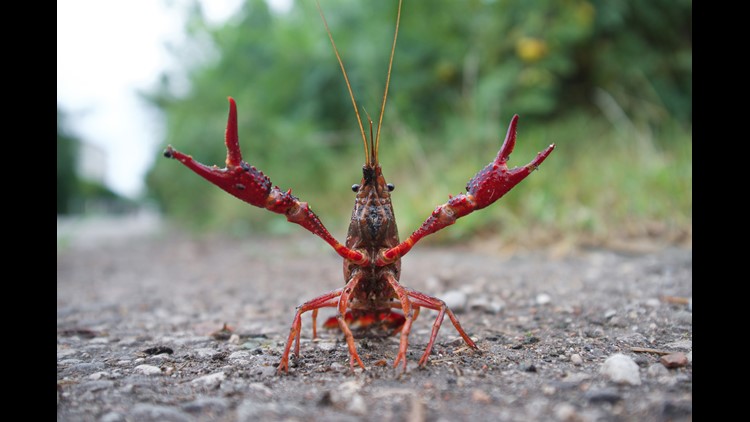MOSCOW, Idaho — A Lewiston High School teacher and two of her former students were recently published in a peer-reviewed scientific journal due to their detecting an invasive crayfish species never before found in northern Idaho.
The University of Idaho Extension’s (UI Extension) citizens' science program, called IDAH₂O, provides student scientists a unique opportunity to survey for potential early detection of management-relevant biological invasions.
Lewiston High School science teacher, Jamie Morton, and students, Elizabeth Connerley and Robert Bayless, were investigating a pair of municipal stormwater ponds when Morton's class trapped a crustacean - later confirmed to be Idaho's first known red swamp crayfish.
The UI Extension IDAH₂O students were participating in the River Mile’s Crayfish Study - in which schools and their students monitor native and non-native crayfish populations throughout the Pacific Northwest - when they discovered the invasive, red swamp crayfish.
The students trapped six additional red swamp crayfish from the ponds, proving the original finding was not an isolated occurrence. A crayfish expert later confirmed the species through DNA testing.
The River Mile Study previously documented the presence of the non-native, virile crayfish in the Pacific Northwest. However, until the students' discovery in October 2021, they had yet to be found in northern Idaho.
The journal states that the discovered crayfish may represent the only established population in the Snake River watershed, a major tributary of the large, downstream Columbia River.
BioInvasions Records states that if aquatic invader multiplies in the surrounding environment, it could harm water quality and native species.
The findings allowed for the U.S. Army Corps of Engineers to act swiftly, initiate a monitoring system and begin removal efforts.
"It's a genuine, honest discovery. And I hope it creates more buy-in with my classes as we go on, especially when it's officially published," said Morton.
"We can make a contribution just being normal citizens. You don't have to go to college, and you don't have to become a scientist in your day job to be interested and take care of your environment."
About IDAH₂O:
For the past seven years, UI Extension's IDAH₂O program has provided hands-on learning opportunities for Lewiston High School teacher Jamie Morton's ecology and environmental science classes, which sample water and trap invertebrates in local watersheds.
Morton then shares their data to help UI Extension assess the health of Idaho's waterways.
Throughout the past decade, IDAH₂O has taught basic water quality monitoring techniques to more than 600 citizen scientists from throughout the Pacific Northwest.
Active participants receive pH test strips, kits for measuring dissolved oxygen in water and other basic supplies to record stream data, which they upload via a web app.
Jim Ekins, UI Extension water educator and director of IDAH₂O, trains his volunteers to collect data, identify and report crayfish species for River Mile.
"We think citizen science may be a good way to find new invasions of invasive species. There are that many more eyeballs," said Ekins.
"Plus, we are teaching kids science, being observant and writing things down. Those are skills you need for any job."
About crayfish:
According to Regional Euro-Asian Biological Invasions Centre (REABIC) and InvasivesNet, the non-native crayfish species has become increasingly prevalent in the Pacific Northwest (northern California, Idaho, western Montana, Oregon, Washington State) over recent decades.
Many of these non-native species spread rapidly in their non-native ranges, negatively impacting or harming native species through mechanisms like competition for habitat. The crayfish have been introduced to the Pacific Northwest through a variety of pathways and vectors, including stocking for sport fish management, and the possible release of laboratory organisms by classroom students.
The journals state that early detection of new crayfish invasions is critical for rapid responses to contain, control, and potentially eradicate these populations before they spread and impact native species or ecosystems.
You can find published journals here:
Paper published online in the "BioInvasions Records" journal.
June print edition in quarterly journal.
Watch more Local News:
See the latest news from around the Treasure Valley and the Gem State in our YouTube playlist:



